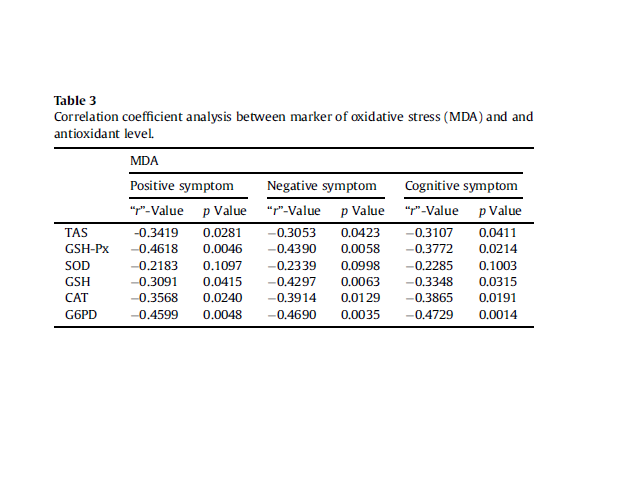Status of antioxidant defense and lipid peroxidation in schizophrenics with positive, negative and cognitive symptoms
Keywords:
Erythrocyte antioxidant , Lipid peroxidation , Schizophrenic symptomsAbstract
Introduction: The etiology of schizophrenic is still remains elusive. In the last few decades, dopamine hyperactivity hypothesis predominates in the research field. Impaired antioxidant defenses are suggested to participate in the pathophysiology of schizophrenia. The aim of this study is to elucidate whether oxidative stress may have a pathophysiological role in schizophrenia and in clinical course. Methods: A total of 48 schizophrenic patients of age group 18e55 years (30M: 18F) were recruited. The patients were divided into three groups: 18 subjects with positive symptoms, 14 with negative symptoms and 16 with cognitive symptoms. The control groups consist of 48 healthy individuals that were recruited from general population with similar socio-economic status. Total antioxidant ststus (TAS), erythrocyte malondialdehyde (MDA), superoxide dismutase (SOD), catalase (CAT), glutathione peroxidase (GSH-Px), glutathione (GSH) and glucose-6-phosphate dehydrogenase (G6PD) were measured using standard methods. Results: Erythrocyte MDA concentration was significantly increased in schizophrenic subjects with positive, negative and cognitive symptoms. Contrarily, the erythrocyte antioxidant enzymes GSH-Px and CAT were significantly reduced among schizophrenic subjects. Erythrocyte GSH and plasma TAS concentrations were also significantly reduced in schizophrenic subjects. Likewise, secondary antioxidant enzymes activity G6PD was significantly reduced (p < 0.01) among schizophrenic subjects. Conclusion: Our finding reveals that maintenance of redox balances within cells is a primary component of homeostasis underlying neuronal survival. Studies are pointing to oxidative stress as a part of the pathology in schizophrenia. Therefore, identifying viable therapeutic strategies to tackle oxidative stress and the resulting physiological disturbances will provide an exciting opportunity for the treatment and ultimately prevention of schizophrenia.
Downloads
Metrics





